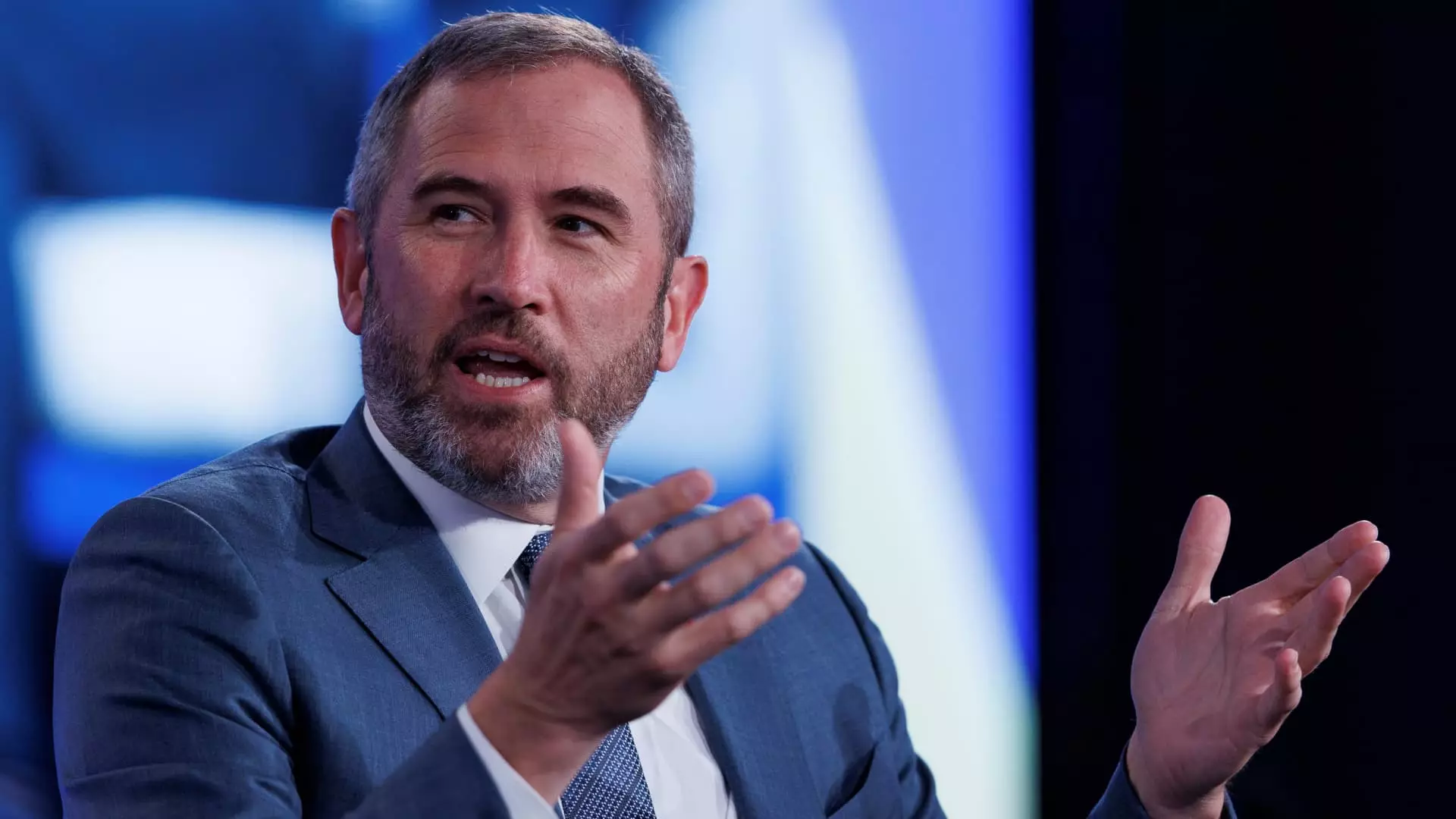In the constantly evolving world of cryptocurrency, regulatory frameworks play a critical role in shaping the industry’s future. Ripple Labs, under the leadership of CEO Brad Garlinghouse, finds itself at the crossroads of innovation and regulation. Historically skeptical of the cryptocurrency regulatory environment in the United States, Garlinghouse now expresses a renewed optimism about the future, particularly in light of the upcoming elections. This perspective signifies a notable shift in the discourse surrounding crypto regulations, suggesting that the industry may finally be on the cusp of a more favorable climate.
As the crypto space matures, stakeholders have increasingly recognized the need for nuanced regulations that can foster innovation rather than stifle it. Garlinghouse’s assertion that the upcoming elections could bring about a “more pro-crypto, more pro-innovation Congress” emphasizes hope for significant legislative changes that could benefit not only Ripple but the entire crypto ecosystem. This optimistic outlook is bolstered by the evolving consensus among lawmakers that clarity and support for digital assets could foster economic growth and competitiveness.
Ripple’s Global Perspective
Ripple’s business model, primarily oriented towards providing solutions for banks and financial institutions, underscores an important reality: approximately 95% of its operations occur outside the U.S. This substantial international footprint is emblematic of the challenges posed by the regulatory environment domestically. The SEC lawsuit against Ripple from 2020 has had lasting impacts on the company’s operations and the industry at large, prompting discussions about the security designation of cryptocurrencies.
Garlinghouse’s call for fintech startups to “incorporate outside the United States” reflects a broader sentiment among industry leaders who view the U.S. regulatory framework as constrictive. The recent legal victory in proving that XRP is not a security when sold to retail investors on exchanges could be a pivotal moment in the fight for clarity within the cryptocurrency space. It highlights the potential for progressive legal precedents, even amid ongoing challenges.
Political Contributions and Industry Unity
Ripple has not only been proactive in navigating regulatory challenges but has also invested significantly in political advocacy through contributions to pro-crypto political action committees. With Ripple and its co-founders contributing millions to various campaigns, including that of Vice President Kamala Harris, it’s clear that the crypto industry seeks to create allies within the government to effect positive change.
However, this financial commitment is tempered by concerns over the current administration’s perceived hostility towards crypto businesses. Garlinghouse’s critique of the Biden administration’s approach reflects a deep-seated belief among industry members that a shift is necessary. The notion of “Operation Chokepoint 2.0,” which references an earlier initiative to deter banks from engaging with less conventional businesses, evokes the fear that similar tactics may curtail the growth of innovative financial technologies. The implications are immense, as the industry’s future depends heavily on regulatory clarity and support.
Garlinghouse’s observations also reveal a concerning trend within the crypto community: the growing polarization of crypto sentiments among political factions. While bipartisan efforts have occasionally surfaced, many industry insiders fear that a continued Democratic-led agenda could perpetuate the regulatory challenges that have already stifled growth. Garlinghouse’s anticipation for a “reset” in regulatory policies, regardless of the election outcome, emphasizes the need for consensus in understanding crypto as a legitimate sector deserving of support.
Moreover, Garlinghouse’s endorsement of John Deaton in his campaign against Senator Elizabeth Warren—who has consistently challenged the crypto sector—serves as both a tactical maneuver and a clarion call for broader advocacy within the industry. Deaton’s campaign becomes symbolic of the desire to counteract prevailing narratives and push for a legislative landscape that fosters innovation rather than restriction.
Despite the array of challenges and uncertainties that ripple through the cryptocurrency landscape, Garlinghouse remains confident in the industry’s potential for resilience and growth. His belief that upcoming electoral changes will create a more favorable regulatory environment signifies the underlying optimism within the industry. In Garlinghouse’s view, the long-term evolution of crypto is inevitable, and while history may reflect on a time where the U.S. regulatory framework lagged, the trajectory toward a more supportive atmosphere appears to be on the horizon.
This optimism reflects a broader trend in the cryptocurrency sphere, where industry leaders advocate for proactive engagement in politics and regulatory discussions. As Ripple continues to forge its path while advocating for a constructive regulatory framework, the future of cryptocurrency in the United States may ultimately hinge on the ability of its leaders to influence positive change amid a landscape fraught with challenges.

